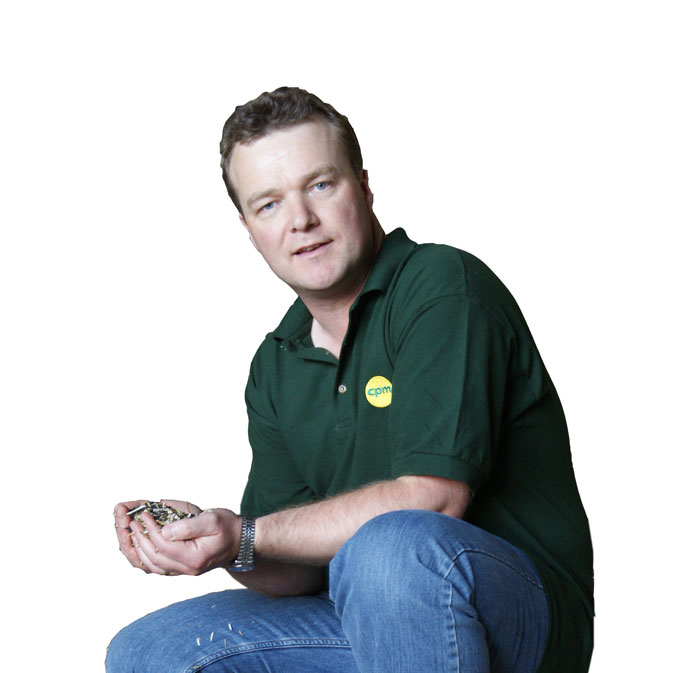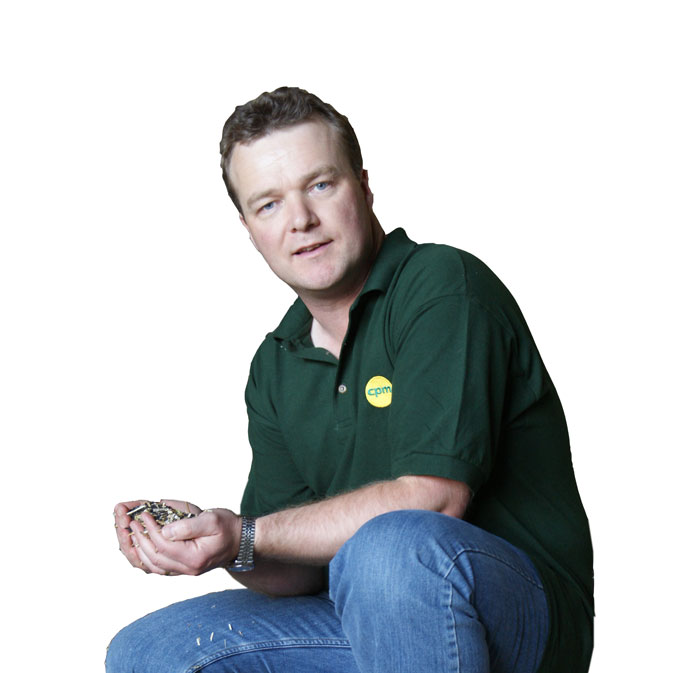 Scientists have made an important discovery about plant roots – it’s not that they can’t get through compacted soil, they choose not to. The question for farmers is what to do with that information.
Scientists have made an important discovery about plant roots – it’s not that they can’t get through compacted soil, they choose not to. The question for farmers is what to do with that information.
The findings of the research, led by Nottingham University, were published in Science last month. Compacted soil causes ethylene to build up, according to the research team, which acts as a signal to plant roots to stop growing. But in plants where a mutation has been introduced to switch off this response, the roots will continue to grow through the compacted soil.
On the one hand, this is potentially a massive breakthrough. Increasingly heavy kit has put arable soils worldwide under pressure – more than half of Europe’s 68M hectares of cultivated land is prone to compaction. Farmers spend a fortune alleviating the problem and yields could be significantly improved if crops could be bred that didn’t have this restriction.
But on the other, isn’t this exactly the wrong thing to do with this discovery? Compaction is damage to the soil, causing soil erosion and nitrous oxide emissions, as well as poor yields. It’s never a good idea to ask a plant root to grow through compacted soil, whether or not it’s capable of doing so. Organic farmers would rightly scorn a system that engineered crops to allow bad practice and such a notion goes against the very essence of conservation agriculture.
So should we ban plant breeders and scientists from engineering such an ability into crops? That is in effect how EU regulation currently works, and the question Defra has now put in front of us in a consultation is whether to diverge from this.
Defra has always believed that where a change to a plant’s DNA could have happened naturally, this should not make it a GMO, subject to the tight EU regulations. The grey area is gene-editing (GE) where a cut – or edit – is made at a very precise point in the genome. The slight mutation that results when the plant naturally mends this cut is known to confer a desired trait.
Similar mutations happen every day in the field – it’s the skill of the breeder that spots the traits they confer and brings the desirable ones into commercial lines. In fact, it’s quite likely there’s a wheat plant somewhere with a natural mutation that’s switched off this rooting response. It could be in your field and you’re just not aware that the mutation’s there.
Now that the trait has been identified, though, and scientists have a proof of concept from an engineered plant, it’s just a matter of time before the place in the genome is pinpointed and marker-assisted breeding is used to bring the compaction-busting root capability conventionally into commercial lines. So it seems a little ludicrous to me to restrict a breeding technique that could effect the same change in a fraction of the time, whatever the outcome.
The difficulty is that if you over-regulate a technique such as GE because you fear it may have undesirable outcomes, with the same hand you stifle the potential for that same technique to do good things. It’s not the fault of the tool that there’s a bad outcome, but the way it’s used. So rather than over-regulate and restrict its use, we should bring it into the field and develop our understanding.
Coming back to this discovery about compaction-busting plant roots, I don’t think we should regulate or restrict breeding of plants that have this ability, although I thoroughly respect the views of those who’d choose not to have them on their farm. Equally, whether they choose to grow compaction-busting crops or not, the farmers who throw the good soil management rulebook out the window are fools.
But there is a third way. As with any crop bred with new plant-breeding techniques, these are not tools for fools but plants with potential. Wouldn’t you want to know how they performed in dry soils, brashy soils, late-planted after roots, in the corner of that field where establishment is always tricky? Are they best used rotationally, or as a short-term measure to restore life and structure to a damaged or reclaimed soil? How do they fair with cover crops, companion crops, in a blend, planted inter-row or as a perennial understorey? How they do in min-till, no-till, strip-till, controlled traffic farming, on sand that caps, or in deep subsoil layers of naturally compacted clay?
Rather than restrict their introduction to the field, that’s exactly where these plants should be. Rather than close our minds to them, we should be open to what they can do, share our views and build on one another’s experiences – good and bad. And rather than view them as a binary tool that will simplify a system, allow them to find their place in a matrix of methods that complements the rest.
Here in the UK, right now, we are in a unique position to unshackle ourselves from the traditional view of how farming should be done. We have a new agricultural policy to put in place, and there is a genuine call from Defra that this should be co-designed with farmers. The roadmap to its new R&D Innovation package starts this spring. This is surely the time to bring as many technologies as we can into the field to explore what they can do.
Tom Allen-Stevens has a 170ha arable farm in Oxon, where the main restriction on roots is the inability to get into the field to start them off. @tomallenstevens




